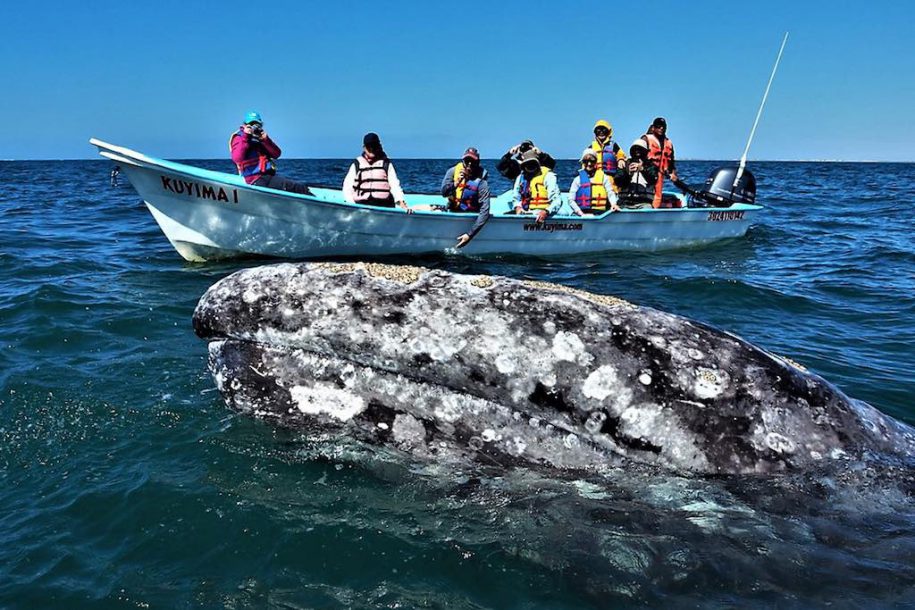Each year, whales travel more than 9,000 kilometers from the Bering Sea in North America to reach the coasts of Baja California and Baja California Sur in Mexico. These specimens arrive to reproduce and have their calves in the warm waters of the Pacific Ocean and Sea of Cortez.
The birth of whales in the area of Baja California Sur, occurs between the months of January and April of each year. Beginning in December, you can see the whales migrating past Land’s End, where the Pacific Ocean meets the Sea of Cortez. Among the whales most seen in the peninsula are the Humpback Whale and the Gray Whale.
The Gray Whale is a mammal that can measure up to 15 meters in length and weigh about 36 tons and feeds mainly on small crustaceans. Its skin is gray and is usually covered with white crustaceans, and it is recognized as a very calm and friendly mammal. While the Humpback Whale is distinguished by its large size. It is recognized for its spectacular jumps, fin strokes, pectorals and tail.

Where can you do whale watching?
The sighting of whales is an important part for the awareness of conservation and protection of our precious marine mammals. With the advent of ecotourism, Baja California now draws nature lovers from all over the world. There are many popular areas in the state of Baja California Sur to observe these gentle giants.
– San Ignacio Lagoon
Located in the heart of the El Vizcaino Biosphere Reserve, the San Ignacio Lagoon is the destination of more than 300 individual Gray Whales. From December to April of each year, more than 10,000 tourists have the opportunity to have direct contact with these cetaceans that can weigh up to 40 tons and can measure up to 15 meters long.

– Scammon’s Lagoon
Located next to the town of Guerrero Negro, the mammals arrive to reproduce. The place combines a unique natural spectacle in which Gray Whales and marine life coexist with the most diverse birds and desert species. Getting to this place is not easy, but there are tours that leave from Ensenada, north of Baja California, which includes transportation and lodging.

–Magdalena Bay
It is world famous not only for being one of the three breeding sites of the Gray Whale, it is also habitat for numerous species of migratory birds, fish and sea turtles. The whales in this area are very friendly during the sighting, approaching the boats to say hello. Their nicknames are the friendlies! You can leave from the coastal communities of Puerto San Carlos and Adolfo Lopez Mateos.

–Bay of Los Cabos
From San José del Cabo to Cabo San Lucas, visitors have the opportunity to see Gray Whales that emerge to the surface to give a great spectacle for those who decide to have a closer encounter with these great creatures. In the destination there are different tours that offer you the opportunity to photograph the whales up close. Pez Gato Amazing Adventures offers two tours daily. The Whale Watching Excursion includes breakfast, coffee andnational open bar during the tour. Also on board is a guide to help you identify the different whales and other sea life.

The season officially begins December 15thand ends on April 15th.. When visiting or if you are a local in Los Cabos, do not miss this exciting opportunity and book your reservations today!
